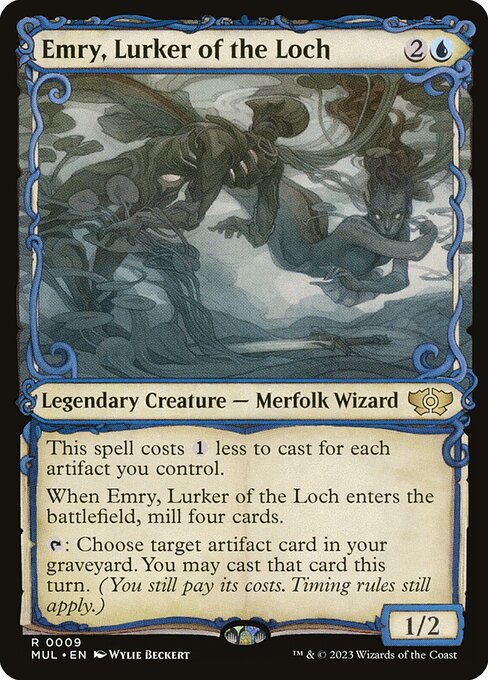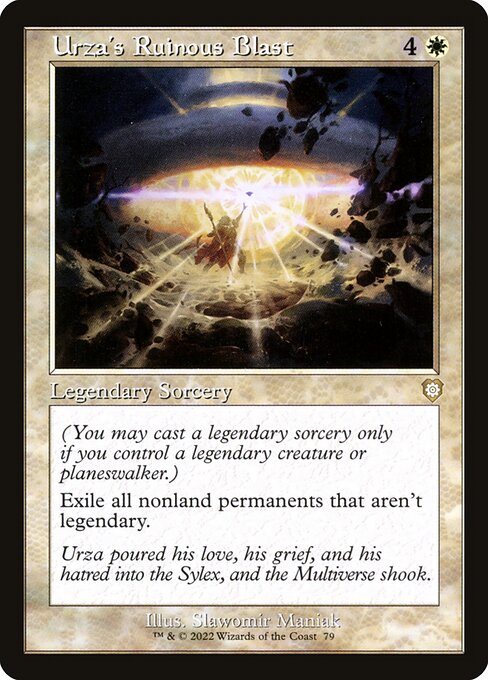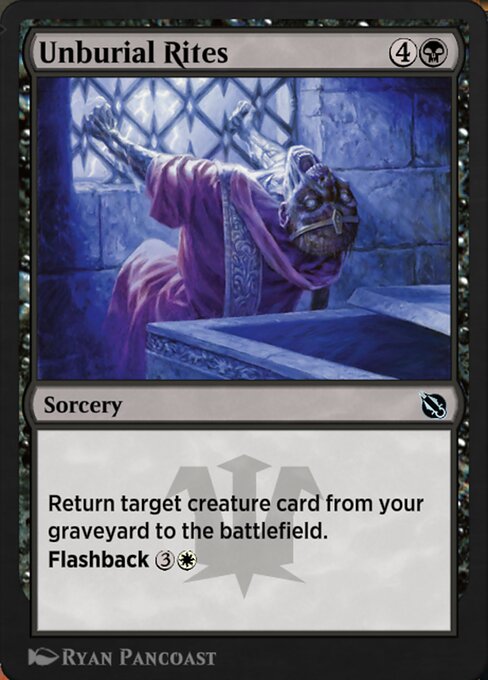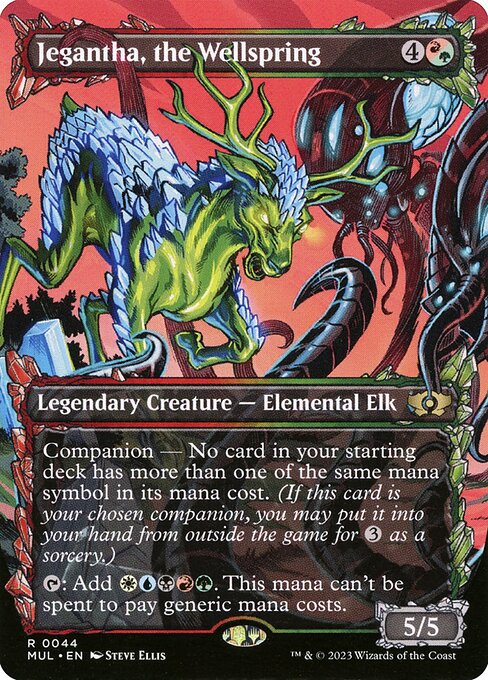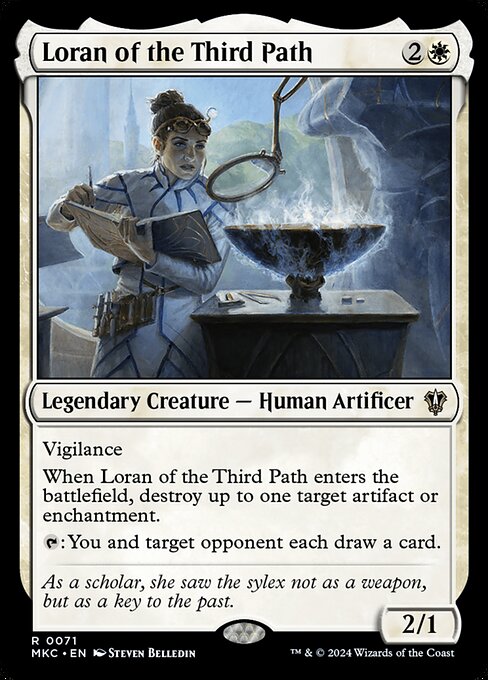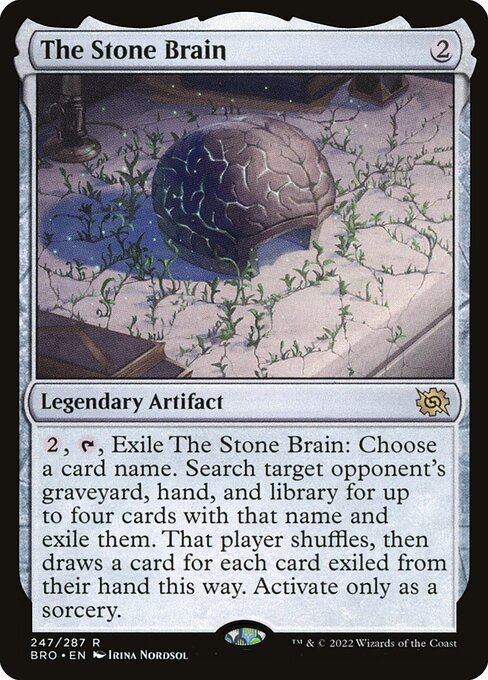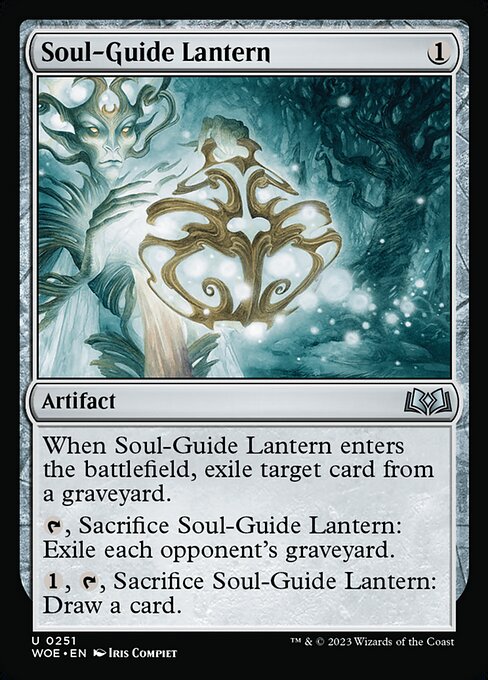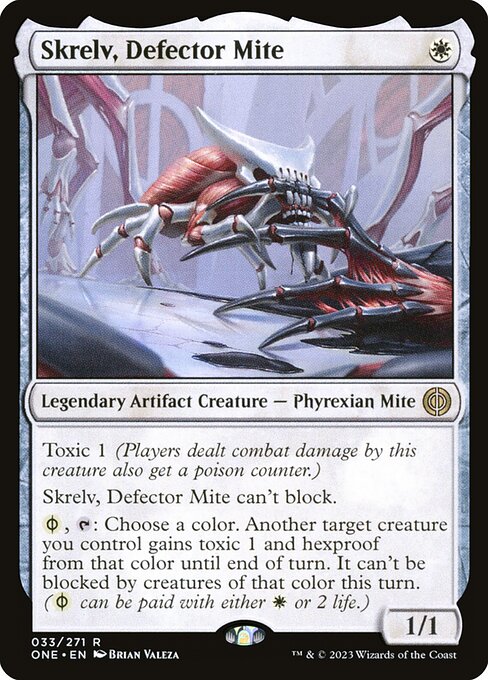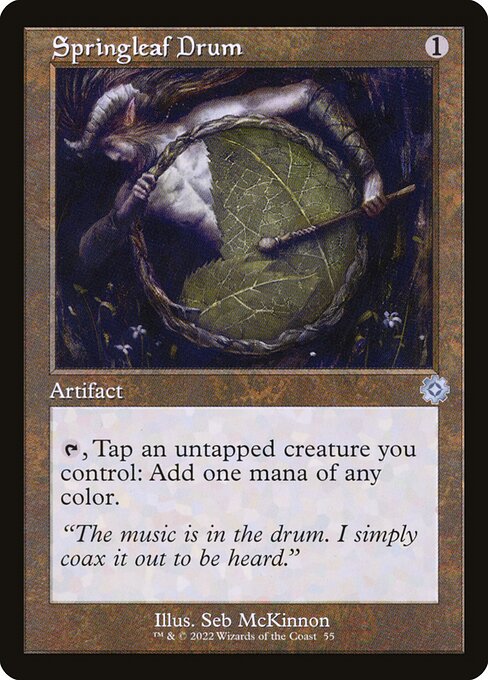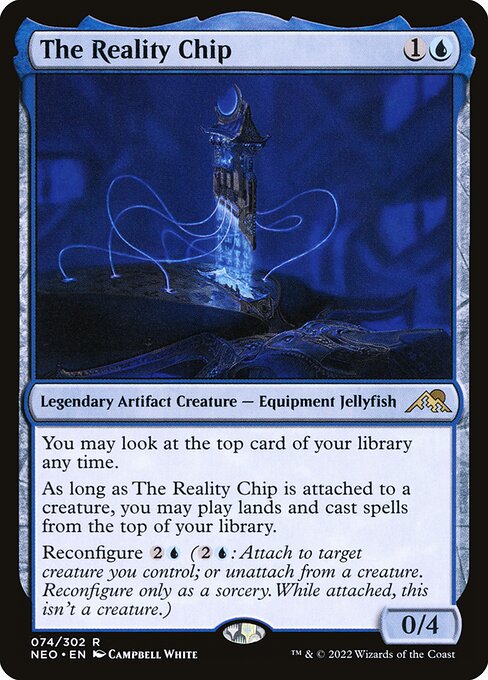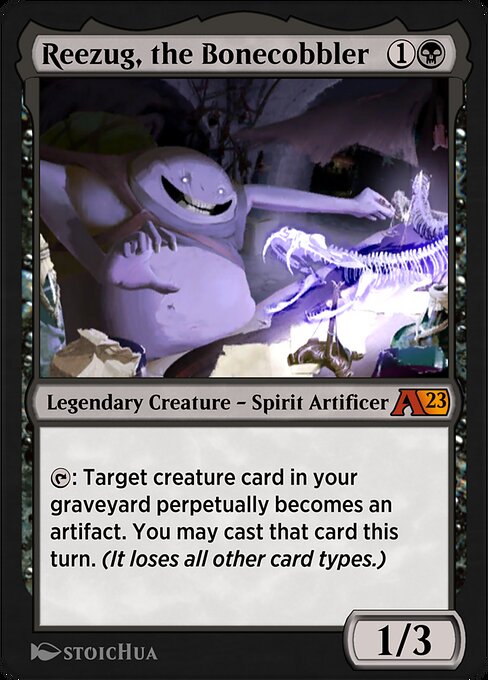Table of Contents
Hello everyone! Today I’ll be going over Kethis Combo, which has been my pet deck for a long time, and thanks to Jace, the Perfected Mind, is now one of the strongest decks in the Historic format, making up over 15% of the Mythic Championship 2 metagame. A blisteringly fast graveyard-based combo deck built around Kethis, the Hidden Hand, this deck is incredibly resilient to hate and boasts a fully functional four-color mana base without a single tapped land.
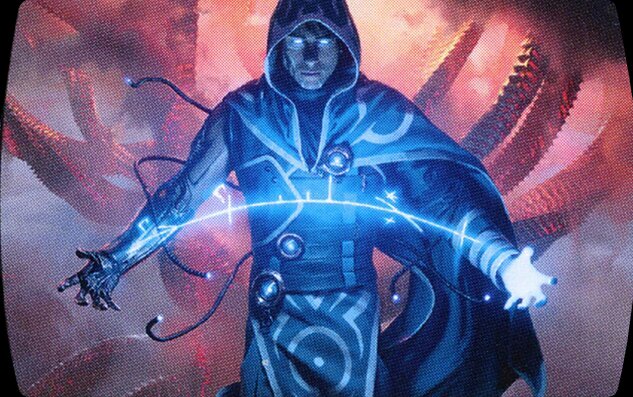
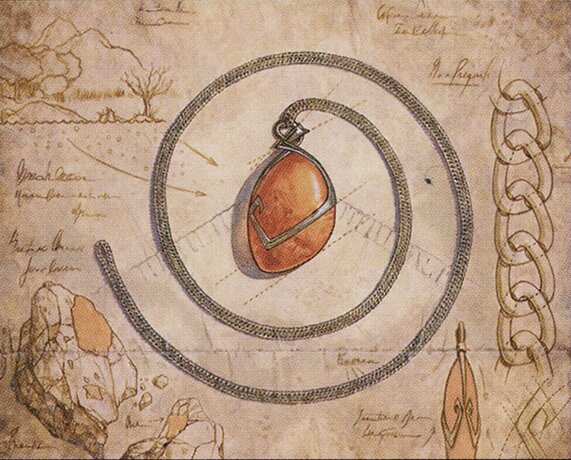

Companion
Planeswalkers (4)
Creatures (15)
Instants (3)
Lands (24)
60 Cards
$760.71
Sideboard
15 Cards
$38.92
THE DECK:
Kethis, the Hidden Hand: This deck’s namesake card, Kethis is not only a formidable value engine (thanks to the repeatable nature of his activated ability), but also this deck’s combo enabler. Kethis is best when combined with a repeatable source of self-mill, such as two Emry, Lurker of the Loch, or the brand new Jace, the Perfected Mind, and a source of mana, such as two Mox Ambers or a Relic of Legends. With these pieces, repeatedly activating Kethis enables this deck to deck first itself, then the opponent, in a single turn, sometimes as early as turn three. The rest of this deck is built around finding Kethis and getting enough cards into the graveyard to ensure that it wins the turn Kethis comes down.
Emry, Lurker of the Loch: A part of this deck’s core ever since its inception, Emry, Lurker of the Loch represents a one-mana self-mill for four during the combo turn. Most importantly, Emry is legendary, so its mill is repeatable once you’ve got two because, with each Kethis activation, you can legend rule an Emry back into the yard. However, Emry is also a very powerful card-advantage engine, bringing back Mox Amber and Relic of Legends, or looping Chromatic Star every turn for a build-your-own Phyrexian Arena.
Jace, the Perfected Mind: The latest addition to the deck, Jace is this deck’s second source of repeatable self-mill during the combo turn. With Kethis out, Jace mills 15 for only three mana, and with two Mox Ambers to loop with Kethis, goes positive on both cards in the graveyard and mana. Jace is also a planeswalker that ticks down to draw cards, protects itself with its tick-up, and represents a scary ultimate. If your opponent doesn’t get on the board early, Jace can run away with the game by himself pretty easily.
Mox Amber: This deck’s main source of mana during the combo turn, Mox Amber is pretty close to a true Mox in the early game, and is even better while comboing. With two Mox Ambers, you can legend rule a Mox back into the graveyard every time you cast one, making each Kethis activation net you one or more mana. This means that most of your combo turns involve casting Kethis, and then milling yourself for as much as possible and hoping you hit the crucial second Mox Amber so that you can go truly infinite.
Relic of Legends: One of the only non-legendary cards in the deck, Relic is a powerful accelerant and combo piece that makes turn three and four kills a lot more consistent. Relic lets your creatures tap for mana even if they have summoning sickness, meaning that Kethis, the Hidden Hand plus Relic of Legends and two Emry, Lurker of the Loch wins the game. You can legend rule Emry back into the graveyard with each Kethis activation, and Relic means that Emry pays for itself, so you can go through your entire deck with this combo, and from there winning is trivial.
Kinnan, Bonder Prodigy: With a play set of Moxen, Chromatic Stars, and three Relic of Legends, Kinnan makes a lot of extra mana, and enables extremely fast starts with the right draw. In addition, Kinnan’s activated ability offers a contingency plan in case of flood or disruption that is surprisingly relevant. While seven mana is a lot, it’s very much achievable with a Relic of Legends in play, and Kinnan is the only human in the deck, so Lazav, Kethis, and Emry are fair game.
Lazav, the Multifarious: While not as important now that Diligent Excavator isn’t part of the deck anymore, Lazav is still great at being a backup copy of Kethis, the Hidden Hand, who is now all the easier to get into the graveyard thanks to Jace, the Perfected Mind. Plus, Lazav can also turn into an Emry or Kinnan to get some value and has a solid body for blocking early in the game.
Grisly Salvage: Another new addition to this deck, Salvage is a good way to dig for Kethis while simultaneously filling the graveyard. Salvage does require a small sacrifice in the mana base because Plaza of Heroes can’t cast it, but it’s worth it.
Chromatic Star: Star is mostly in the deck because of Emry, Lurker of the Loch, and for some extra mana fixing. That being said, it’s also good with Kinnan, Bonder Prodigy, and occasionally, having a Star in play or not can be the difference between comboing off or not, because, with only a Kethis, the Hidden Hand in play Mox Amber doesn’t tap for blue, and blue mana is necessary for the combo. Chromatic Sphere is currently bugged on MTG Arena, were it not that this deck would run it instead of Star because it is slightly better. Due to the different wording, Star doesn’t draw a card when Rest in Peace is in play whereas Chromatic Sphere does, for example.
Assemble the Team: Assemble the Team is Grisly Salvage number four, it doesn’t put cards into the graveyard, but is more effective at finding Kethis, and can also find Jace, the Perfected Mind, and some sideboard cards that Grisly Salvage can’t.
Urza's Ruinous Blast: Blast is only a 1-of in the main deck because it’s bad in multiples, dead in certain matchups, and doesn’t help the combo, but against a lot of the field it wins the game on the spot. Blast is a metagame call that’s particularly effective because of all of the Affinity decks in the format, but if Historic shifts in a way that makes Blast less effective, it could be replaced by Lazav, the Multifarious, a fourth Grisly Salvage, or a fourth Relic of Legends.
Unburial Rites: Because of Jace, the Perfected Mind, this deck is now really good at milling itself, which makes Rites a nice card to make Kethis easier to find. However, Rites is a 1-of because it’s bad in multiples and easy to find, and it’s not a great card to draw.
MANA BASE:
Few mana bases are as much of a challenge to build as this deck’s. This deck requires four colors of mana consistently and hates tapped lands, which is quite a restriction. If that’s not enough, it also wants to run a plethora of legendary lands that only tap for a single color. This deck’s saving grace is Mana Confluence and Plaza of Heroes, eight free sources in every color that greatly alleviate its color-related troubles.
The legendary channel lands are incredible for this deck, both because they have powerful effects at a reduced cost, and because they fuel Kethis, letting this deck run more non-legendary non-lands. The three
SIDEBOARD:
Jegantha, the Wellspring: This deck can run one of two companions: Jegantha or Zirda, the Dawnwaker, and Jegantha slightly edges out Zirda. Although Zirda is cheaper and synergizes with Kinnan and Lazav, companions are most important once something has gone wrong, such as mana flood, graveyard hate, or even an extraction effect like The Stone Brain, and at that point, Jegantha’s bigger body outweighs every upside Zirda offers. Additionally, Jegantha works with all of this deck’s sideboard cards, and post-board games are when companions are most useful because post-board games tend to be longer and grindier.
3 Fatal Push: Cheap removal, Push is turned on pretty easily with Chromatic Star.
2 Lavinia, Azorius Renegade: Excellent against Mono Green Devotion and the mirror, as well as some fringe combo decks such as Dragonstorm combo.
2 Loran of the Third Path: Counterplay against hate pieces like Unlicensed Hearse that is also excellent against Affinity.
2 Urza's Ruinous Blast: One of this deck’s best sideboard cards, Blast is a one-sided board wipe against a lot of decks that also hits most hate pieces.
1 The Scarab God: Powerful recursive threat against grindy decks like RB Midrange.
1 Ertai Resurrected: Mostly to kill Karn, the Great Creator, and other problematic permanents.
1 The Stone Brain: Mostly for the mirror, and other fringe combo decks.
1 Soul-Guide Lantern: Efficient graveyard hate that can be looped with Emry, Lurker of the Loch.
1 Viconia, Nightsinger's Disciple: Less efficient graveyard hate that can also make a passable Lazav impression.
BEST-OF-ONE:



Planeswalkers (4)
Creatures (15)
Sorceries (1)
Lands (24)
60 Cards
$764.94
The only change I would make to this deck in best-of-one is adding two Fatal Push to make it a little better against aggro, at the cost of Assemble the Team and Unburial Rites, which are a little too slow. This deck benefits from best-of-one because it’s a combo deck that is susceptible to hate, and it gets to dodge most of the effective hate against it such as Unlicensed Hearse or The Stone Brain in best-of-one. However, this deck’s worst matchup, Izzet Wizards, is a lot more prevalent in best-of-one than it is in best-of-three, so this deck is overall a little worse in best-of-one than it is in best-of-three.
NOTABLE EXCLUSIONS:

One of my simultaneously favorite and least favorite things about Kethis is that there are so many different ways to build it, and so many cards vying for just a couple of flex slots. Here are my frontrunners for cards that are worth considering, but not quite good enough to make it into the deck.
Diligent Excavator: Oh how the mighty have fallen. Diligent Excavator was once a central part of this deck, providing the recursive self-mill engine it needed, and doubling as a win-condition. Unfortunately for Excavator, it has been eclipsed by Jace, the Perfected Mind, which is both better at milling, and is legendary, which was a huge downside of Excavator. I’ve seen some lists post-Jace still running Excavator, but Grisly Salvage seems like a better option because it advances this deck’s game plan more effectively.
Skrelv, Defector Mite: My first iteration of Kethis post-Jace had three Skrelv, and I was quite impressed with it, but ultimately cut it for a couple of different reasons. Everything else in the main deck was all but set in stone, with Skrelv and Grisly Salvage competing for the last couple of spots. Skrelv is an artifact for Emry and gives this deck more to do on turn one, which it does admittedly lack, but Skrelv required a lot of stretching of the mana base and is relatively useless against a lot of decks like Mono Green Devotion. Ultimately, finding Kethis with Salvage is better than protecting it with Skrelv, especially since in a lot of spots even if Kethis dies immediately after coming into play, it’s still possible to combo off.
Springleaf Drum: I initially overestimated how good Drum would be in Kethis, 16 creatures and no one-drops is just not enough to make Drum work, and even with a more creature-heavy build, being able to draw off Chromatic Star and loop it with Emry means Drum is outclassed.
Hope of Ghirapur: Without Diligent Excavator, Hope is pretty useless while comboing, and has too little of an impact outside of the combo as well.
The Reality Chip: I ran this card in the deck for a while, and it almost made it into the maindeck. Chip is good in grindy games and can lead to some crazy turns with Relic of Legends, and it’s a good way to get on the board early that also synergizes with Emry. Ultimately, Chip didn’t make the cut because it’s just a 0/4 too often. Plus, losing an entire turn to having a creature removed out from under Chip in response to the activation is so bad.
Tyvar, Jubilant Brawler: I tried very hard to make Tyvar work, but I just couldn’t. Even while running a lot more one and two-drops than I am now Tyvar whiffed too often on the minus, the plus wasn’t very impactful, and even when Tyvar reanimated a creature, it was still a two-drop that cost three mana. Tyvar is relevant for making blue mana during the combo turn by reanimating a Kinnan, but ultimately this is too marginal a use case to push Tyvar over the top, and Unburial Rites does the same, if for a little more mana.
Reezug, the Bonecobbler: Reezug is simply too hard to untap with, and occasionally there isn’t even anything in the graveyard to target. Reezug is a worse Lazav, the Multifarious most of the time, and this deck doesn’t even run the full playset of Lazavs. I’d only consider Reezug in a list with multiple Tyvars.
Jace, Wielder of Mysteries: This Jace is no longer necessary in the main deck because of how efficient Jace, the Perfected Mind is at killing the opponent by milling them. There’s an argument to be made for putting a singleton Jace in the sideboard because of The Stone Brain, which can strip the deck of Jace, the Perfected Mind, and leave it without a win condition. However, this rarely comes up, and at that point, it’s still very much possible to win by just beating down. Kethis, Lazav transformed into Kethis, Kinnan, Jegantha, and Emry is 14 power that can be recurred each turn with Kethis, which isn’t trivial to overcome.
Dross Skullbomb: Very cute with Emry, Lurker of the Loch, but that doesn’t come up too often because of how mana intensive it is, and sacrificing for zero mana is a lot worse than for one or two mana, so Chromatic Star is just better in most cases.
ARENA CHAMPIONSHIP 2:



Companion
Planeswalkers (4)
Creatures (14)
Instants (4)
Lands (23)
60 Cards
$737.61
Sideboard
15 Cards
$44.05
I’m very excited about Arena Champion 2, particularly because 5 players, one of them being Ondřej Stráský, (one of the original creators of the archetype), are playing Kethis in it. Before the Championship, I got to discuss the deck with Strasky and offer some suggestions for his list, as well as gain some valuable insight from him. The list he registered and the list I’m recommending in this article are slightly different, partially because his list is tuned for the Championship, so I want to address the differences. As of writing this article, the decklists for the Championship haven’t been published yet, so I can’t speak to the builds of other players.
In the main deck, I’m running one less Relic of Legends and one less Grisly Salvage, in favor of the third Lazav, the Multifarious, and the second Otawara, Soaring City. While Relic of Legends is incredibly powerful in this deck, the full playset isn’t worth it in my opinion because the second Relic is much worse than the first, and Emry makes Relic a lot easier to find. However, having a Relic in play makes comboing off a lot easier, so I don’t hate the fourth Relic. I cut the Salvage because having five of that effect is too many, as drawing multiples slows down this deck’s early game too much, and the first
In the sideboard, I cut the third Loran of the Third Path and Lavinia, Azorius Renegade because in most matchups you only want 1-2 Lorans, and Lavinia isn’t good enough against enough of the metagame to warrant three, and drawing a second Lavinia is a relevant downside with three. I replaced those two with a Viconia, Nightsinger's Disciple and a Soul-Guide Lantern because I’m anticipating that this deck will become more popular, and graveyard hate is the best way to fight it. There are also 5 Mardu Reanimator decks in the Arena Championship, so graveyard hate seems like a pretty good bet.
POST-A2C UPDATE
Hi, it’s Omri from the future, with my post-AC2 update. As it turns out, the other Kethis players brought a completely different list to the event, with the biggest difference being the inclusion of the fifth color, and Jarsyl, Dark Age Scion, and a shift towards a more midrange-y gameplan. However, Strasky was the only Kethis player to top make 8, and even top 4, so there’s definitely still merit for both versions.



Creatures (11)
Lands (25)
60 Cards
$745.59
Sideboard
15 Cards
$39.16
This list leans more in the direction of a midrange deck, backing up Jarsyl with with hand disruption such as Thoughtseize and Inquisition of Kozilek, and removal with Fatal Push. However, this comes at the cost of Kinnan, Bonder Prodigy and Relic of Legends, as well as Lazav, the Multifarious, which significantly reduces this version’s ability to have explosive starts, and combo off early.
Overall I’d say that the four-color version of this deck is slightly better, however the two are very close in power level, and which is better mostly comes down to the metagame. If Izzet Wizards is popular, for example, then the Jarsyl version is better because of the playset of Fatal Pushes in the main deck. However, if there are a lot of Crucias/Jarsyl midrange decks running around (which there are at the moment) then the four-color version is better because trying to out-midrange a midrange deck is a bad plan, and the four-color version has a much greater ability to win out of nowhere, which is the best plan against those types of decks.
This is the Jarsyl list I’d run:



Companion
Planeswalkers (4)
Creatures (13)
Lands (25)
60 Cards
$772.23
Sideboard
15 Cards
$45.47
Changes:
The biggest change I made is adding one Lazav, the Multifarious, and one Kinnan, Bonder Prodigy, at the cost of Soul-Guide Lantern and relegating Jace, Wielder of Mysteries to the sideboard. One of the Jarsyl lists ran a Kinnan already, which I like because it bolsters the number of two-drops for Jarsyl, which this deck lacks. I added Lazav as well because it also makes it so that Jarsyl can recur Kethis a turn earlier. Plus, having two drops makes Fragment Reality a lot worse against this deck. I cut Jace, Wielder of Mysteries from the main because he prevents Jegantha, the Wellspring from being companioned, and isn’t necessary in the main, only as a potential sideboard card against The Stone Brainand Slaughter Games.
In the manabase I cut Spire of Industry because this deck only runs 9 artifacts, 8 after I cut Soul-Guide Lantern, and that’s not to mention that sometimes Spire can be awkward if you need to sacrifice a Chromatic Star. I also cut the fourth Takenuma, Abandoned Mirebecause I feel that four is too many, especially with less cheap legendary creatures to discount it, and I replaced these lands with a couple shocks and checks that are either red or white because without Spire this deck needs a couple extra sources for Jarsyl and Kethis.
GAME PLAN:
As it is for most combo decks, Kethis has two objectives: set up the combo, and survive long enough to enact it. Setting up the combo looks the same in every matchup, just find your combo pieces, develop your mana, and do your best to ensure your combo pieces stay in your hand, play, or graveyard until you can go for the combo. Spending as much mana as possible each turn is an important aspect of this because in most games this deck just wants to cast all of its cards as soon as possible, and then go for the kill. As for surviving, against aggro that might mean trading off to preserve your life total or pausing your development for a second to remove a creature. However, against Rakdos/Jund Midrange or Azorius Control, that might look like prioritizing card advantage from Emry or Jace so that you don’t get buried in card advantage or 1-for-1 interaction. Either way, this deck is linear and proactive, built to ignore or weather the opponent’s game plan until you either combo off or die.
COMBOS:
Keep in mind that you don’t need a deterministic combo to start going off because you’ll often find the pieces you need as you are milling yourself. Additionally, fizzling isn’t as punishing as it can be for other combo decks because even if you fizzle out you’ll most likely be able to restart your combo the next turn as long as Kethis survives the turn cycle, or you have a second copy. Furthermore, be aware that you don’t have to mill your entire deck before you switch to targeting your opponent with Jace, this can save you a little time and eliminates the risk of randomly dying if your opponent forces you to draw two with Archmage’s Charm, or another similar effect. Before taking this deck out for a spin on ladder, I recommend goldfishing against Sparky a couple of times so that you’re familiar with how the combo works and can execute it under time pressure. With that being said, here are all the deterministic or near-deterministic combos this deck has.
1 Kethis, the Hidden Hand in play + 2 Mox Amber in play, hand or graveyard + 1 Jace, the Perfected Mind in play, hand or graveyard:
- Cast all the Mox Ambers in your hand so that one is in play and one is in the graveyard (don’t forget to tap your Amber before legend ruling it).
- Cast Jace if it’s in your hand, preferably for double blue but this also works if you cast it by paying two life. If Jace is in the yard, activate Kethis then cast Jace.
- Then, -5 Jace targeting yourself to mill yourself for 15.
- Activate Kethis and repeat.
You will mill 7-8 legendary cards with Jace on average, and three activations will cost you 6 legends from the graveyard and get you back your 3 mana with Mox. This means you’re netting a legend or two with each Kethis activation. This you can convert into two extra mana to cast Kinnan, at which point you’ll be netting a lot of mana and cards per Kethis activation, which you can use to start casting multiple Jaces per activation and milling your opponent. If you don’t have a blue legend in play make sure to tap your Mox for blue before down-ticking Jace, you’ll only have a single blue mana so you’ll only be able to cast Jace for phyrexian, so when you get the chance, cast a Kinnan or Emry from the graveyard so that your moxen tap for blue even when Jace isn’t in play.
1 Kethis, the Hidden Hand in play + 2 Mox Amber in play, hand or graveyard + 2 Emry, Lurker of the Loch in play, hand or graveyard:
- Cast all the Mox Ambers in your hand so that one is in play and one is in the graveyard.
- Cast all the Emrys in your hand so that one is in play and one is in the graveyard.
- Activate Kethis.
- Cast Mox and Emry from the graveyard.
- Repeat.
This loop goes even on mana but slightly negative on legends because just under half the deck is legendary, and you need half of the four cards you mill with Emry to be legendary for you to activate Kethis again. If you start with a couple of legendary cards in your graveyard running out of fuel for Kethis shouldn’t be an issue, and if you have a third Mox and you start netting mana, you can also start legend ruling Lazavs to get half a card more into the graveyard per Kethis activation, which will put you above replacement level. The goal with this combo is to mill yourself until you hit either a Jace or a third Mox and Emry so that each Kethis activation is netting you mana and cards, and once you deck yourself you can use your excess cards and mana to mill your opponent out with Jace.
1 Kethis, the Hidden Hand in play + 1 Relic of Legends in play + 2 Emry, Lurker of the Loch in play, hand or graveyard:
- Cast all the Emrys in your hand so that one is in play and one is in the graveyard, make sure to tap Emry to Relic before legend ruling it.
- Activate Kethis.
- Tap Emry using Relic for a blue to cast Emry from the graveyard.
- Repeat.
This combo is pretty similar to the previous one, but instead of using Mox Amber to pay for Emry, Emry pays for itself through Relic of Legends. While executing this combo, once you hit a third Emry, or a Jace and a couple of Mox Ambers, you’ll start going positive on each Kethis activation, and as usual, win by decking your opponent with Jace.
SEQUENCING:
Sequencing is as difficult as it is important with this deck, thanks to the plethora of cheap spells, activated abilities, and convoluted mana base. Pay a lot of attention not only to the cost, but also the color requirements of the spells in your hand, and make sure to count correctly, as Kinnan, Bonder Prodigy combined with Relic of Legends and Chromatic Star can make things very tricky.
In general, I would advise waiting as long as possible to cast Grisly Salvage and Assemble the Team, as they don’t assist your development very much, and the later you cast them the more information you’ll have about what you need. You also want to wait to sacrifice Chromatic Star until you have a reason most of the time as it’s a ritual with Kinnan, and a Star in play can mean the difference between comboing off or not if you need to filter into blue mana or discount an Emry. Sometimes it’ll be better to draw the card so you can have maximum information before making any plays, but if you have a reasonable line for your turn already and are far enough away from comboing that a single card isn’t likely to change that, you should probably keep the Star in play.
Conversely, you want to get Relic of Legends, Jace, and Emry down as early as possible. Relic makes your future turns a lot better because it provides you with a lot of mana, and effectively reduces the cost of each legend you play, and the sooner you cast Jace or Emry, the more value you’ll get from them. However, Kinnan is only important to get into play early if you have mana rocks that you are tapping, otherwise casting a Lazav and surveilling, for example, might be a better use of your mana. You also want to hold Kethis in most matchups to avoid exposing it to removal.
Sequencing of lands is another aspect of this deck that requires a lot of thought. In matchups where your life total doesn’t matter as much, hold your channel lands for as long as possible, in case you end up needing their effect more than a land drop, or you simply flood out. Additionally, make sure to play out your fast lands as early as possible. You don’t want to wait till turn three to play your Blooming Marsh, only to draw another one and have to shamefully play a tapped Marsh on turn four when it wasn’t necessary.
One of the biggest choke points for this deck’s mana is Kethis because it requires three separate non-blue mana sources. For example, if you’ve got three non-blue lands and a Chromatic Star, you can either choose to make white, green, or black with Star and be able to cast Kethis if you draw it. However, if you do that you then won’t be able to cast Emry, Kinnan, or Lazav because you don’t have blue mana. Another common decision point that comes up is deciding which color to make two pips of with a mana rock and Kinnan. This deck offers a lot of different lines, so plan out your entire turn before making any important decisions, and be aware of what cards you could draw or mill over that are relevant.
Finally, pay attention to what you are exiling to activate Kethis. Most often you want to preserve your Moxen, Jaces, and Emry, but if you’re not winning immediately you might want to leave a legendary land to play either that turn or the next. If you already have a Jace, Emry is a lot less important, and multiple Jaces are usually unnecessary, but exiling Mox Amber from your graveyard is extremely risky because of how important it is for the combo. If you intend to exile important combo pieces from your graveyard to try to keep comboing, consider carefully whether it’s worth it, because if you completely clear out your graveyard you may have trouble restarting the combo in future turns.
HOW TO COMBO OFF, ARENA IS BAD EDITION:
One of the biggest difficulties when it comes to playing this deck is the fact that the Arena client simply is not conducive to playing this style of combo deck. The rope is an ever-present worry, and this issue is exacerbated by the fact that this deck often goes off in the early turns of the game before there’s a chance to build up timeouts. Fear not, however, because using a couple of strategies, and with some practice, the clock will become more than manageable.
Firstly, make sure your settings are optimized for this deck. In the graphics tab of settings on MTG Arena, make sure that “auto order triggered abilities” is checked, and “enable gameplay warnings” is unchecked, this will save you a lot of time with almost no downside.
Secondly, it’s important to know how the rope works on Arena. After the rope appears, every time you cast a spell or ability you get a little time back, but after your turn has gone on for about five minutes, your rope will start burning down regardless of how many game actions you are taking. This means that it’s important to keep making game actions while you’re comboing off, and there’s a time limit on your turn. The five-minute limit shouldn’t come up as long as you’re taking game actions at a reasonable pace, but it’s still worth keeping in mind.
There are also a lot of small tricks that make comboing off faster. The most important thing you can do to speed up comboing is simply practicing it, because over time you’ll develop a better understanding of the combo, and you won’t have to think at all once you’re comboing deterministically. Additionally, you’ll pick up small optimizations through practice, such as remembering where your mouse needs to be, for example after casting Mox Amber with one already on board, being ready to instantly click and legend rule away the other Mox as soon as Arena lets you. Finally, using the space bar instead of clicking resolve saves a second or two on each trigger. If you can’t use the space bar because you’re playing on mobile, good luck – this deck isn’t impossible to play on mobile, but it’s certainly not easy.
If this section intimidated you a little, fear not. After some practice with this deck the clock will become more than manageable. Thanks to Jace, the Perfected Mind this deck can deck itself and the opponent a lot faster than it could during the days of Diligent Excavator, so as long as you aren’t tanking on every single game action, you’ll be fine.
MULLIGANS:
This deck doesn’t mulligan very well because a lot of its cards are low-impact by themselves. However, it can win even on a mulligan to four or five if you hit enough combo pieces to go off, so don’t hesitate to send back a bad hand. In general, I would keep one-landers only if they’ve got Mox, Star, Emry, and the rest of the hand is good. I would also mulligan any hands missing multiple colors of mana, and most without a turn-one or turn-two play. I would keep most hands with turn-two Emry, or hands with spells, lands, and Kethis, and most hands with Kinnan plus Mox and/or Relic because of how explosive those kinds of draws are. Lastly, pay attention to your opponent’s companion, or lack thereof. Jegantha, the Wellspring and Lurrus of the Dream-Den usually signify that your opponent is playing an aggressive deck, so against those companions don’t keep a slow hand.
MATCHUPS:

The biggest thing to keep in mind when sideboarding with this deck is to avoid over-boarding. Against most decks, you only want to bring in 5-6 cards at most, and often less, because if you board in too many cards the deck will be significantly worse at enacting its game plan. Against decks that have a lot of interaction or when you’re taking the control side of the matchup post-board it’s more ok to sideboard in a lot of cards, but you should still make sure there’s a good reason behind every card you bring in. My go-to cuts are Unburial Rites against anything but grindy decks, Urza's Ruinous Blast when it’s bad, and then Chromatic Star, Kinnan, Lazav, and the Golgari cantrips, depending on the matchup.
RB/Jund Midrange:
| IN | OUT |
|---|---|
| 2 Fatal Push | 1 Kinnan, Bonder Prodigy |
| 1 The Scarab God | 1 Urza's Ruinous Blast |
| 1 Viconia, Nightsinger's Disciple (Against Jund) | 1 Assemble the Team |
| 1 Chromatic Star (Against Jund) |
This matchup varies from even to slightly favored depending on your opponent’s sideboard. Games tend to play out one of two ways: either the Kethis player gets off to a fast start that the Midrange player can’t keep up with and wins right off the bat, or the Midrange player answers whatever threat Kethis is presenting with removal and hand disruption and controls the pace of the game throughout the middle game. If the latter is the case, the game plan becomes ensuring that a top decked Kethis wins the game, and surviving for as long as possible to maximize the chance of drawing a Kethis.
In this matchup card advantage is very important, so prioritize getting down an early Jace or Emry if the opportunity presents itself. Do your best to not give your opponent a two-for-one with Molten Impact, and keep in mind that Kethis is about as safe in play as it is in hand due to the full playsets of Thoughtseize and Inquisition of Kozilek the Midrange player likely has.
There are a lot of different versions of Rakdos and Jund, so adjust your sideboarding based on what you see from your opponent. If they’ve got Jarsyl, Dark Age Scion and Tarmogoyf, Fatal Push gets a lot better, if they have a lot of artifact or enchantment-based hate, bring in more Loran of the Third Paths, and if they have a lot of artifact destruction, Relic of Legends gets worse.
Azorius Affinity:
| IN | OUT |
|---|---|
| 3 Fatal Push | 2 Grisly Salvage (3 On the Draw) |
| 2 Urza's Ruinous Blast | 1 Chromatic Star |
| 2 Loran of the Third Path | 1 Unburial Rites |
| 1 Assemble the Team | |
| 2 Lazav, the Multifarious (1 On the Draw) |
This is a good matchup, in large part thanks to Urza's Ruinous Blast, which reads 5 mana: win the game. Don’t expose Mox Amber to Portable Hole unnecessarily, and if you get the chance, stymying your opponent’s early pressure with something such as a Boseiju on their Ensoul Artifact-ed creature is a great play because it usually buys you multiple turns. In game one it’s usually fine to feed the Esper Sentinel, but post-board, both you and your opponent have a lot more relevant interaction, so giving them free card advantage is a lot worse. Post-board, do your best to play around a counterspell on Urza's Ruinous Blast because if you manage to resolve one, it’s nearly impossible to lose afterward.
Izzet Wizards:
This is this deck’s worst matchup, by far. It’s winnable, but requires some luck, especially on the draw. Game one, cast your cards and hope to live. Don’t bother playing around removal spells because if you do your opponent will just point their burn at your face and kill you. Post-board, Fatal Push is incredibly valuable because killing your opponent’s first creature buys you a lot of time.
Mono Green Devotion:
| IN | OUT |
|---|---|
| 3 Fatal Push | 1 Chromatic Star |
| 2 Lavinia, Azorius Renegade | 1 Lazav, the Multifarious |
| 1 Ertai Resurrected | 1 Urza's Ruinous Blast |
| 1 Unburial Rites | |
| 1 Assemble the Team | |
| 1 Grisly Salvage |
This matchup is difficult for one reason, the bane of this deck’s existence, Karn, the Great Creator. Karn shuts off Relic and Amber, making any semblance of a successful combo turn impossible. Outside of Karn, Mono Green is a full turn or two slower than Kethis and has no relevant interaction, so as long as you dodge Karn, you should win most games easily. If your opponent does find a Karn, there’s a chance you’ll be able to attack it down, so make sure to cast Kethis early in case your opponent does have a Karn, and you can bounce Karn with Otawara, Soaring City as well. Post-board, Lavinia, Azorius Renegade is an excellent sideboard card that prevents early Karns and Storm the Festival, Fatal Push makes attacking down Karn a much more realistic possibility, and Ertai Resurrected is a nice answer for Karn.
The Mirror:
Game one is a pure race,
TIPS AND TRICKS:

The tips and tricks section of each article is always my favorite part to write, and I do my best to include all of the unintuitive and tricky plays I’ve learned while playing the deck, as well as its common pitfalls. This deck has an especially large amount of tricks and complicated cards, so buckle up!
- If you’re not sure if you can successfully combo off and are debating whether you should wait till the next turn to minimize the risk of fizzling, more often than not you should just go for the combo. There are a million things that can go wrong if you let your opponent untap, and this deck can go off starting with surprisingly little.
- Relic of Legends doesn’t work with Kinnan, Bonder Prodigy how you want it to, sorry. Your legends still tap for one even with Kinnan out because Relic itself isn’t being tapped to make the mana.
- Jace, the Perfected Mind, being legendary but not a creature, doesn’t discount the channel land’s channel ability.
- Don’t forget that Urza's Ruinous Blast hits Chromatic Star, Relic of Legends, and Soul-Guide Lantern. It also might not hit all of your opponent’s permanents, so watch out.
- You can target your own spells, triggers, and creatures with Ertai Resurrected to draw a card.
- Loran of the Third Path, Ertai Resurrected, and Lavinia, Azorius Renegade are all humans and therefore can’t be put into play with Kinnan, Bonder Prodigy.
- Loran of the Third Path can target your own artifacts and enchantments, this is really only useful for getting Mox Amber back into the graveyard for Kethis, the Hidden Hand.
- Lazav, the Multifarious copying Kethis, the Hidden Hand gets around Pithing Needle on Kethis.
- You should usually wait to play out Mox Amber until you need it, to deny your opponent information and not expose it to interaction. However, hand disruption and Esper Sentinel are two good reasons to play out your Mox early.
- You can have two of the same legendary creature in play if one of them is Lazav, the Multifarious. However, you can’t have two Lazavs in play even if one of them is copying a different creature.
- Remember that you can channel Otawara, Soaring City and Boseiju, Who Endures from your hand for no value just to get another legend into the graveyard for Kethis, the Hidden Hand. Also, although you can’t target your own permanents with Boseiju, you can with Otawara, which can be mana neutral or positive when targeting Mox Amber, can mill you by bouncing Emry, Lurker of the Loch, or can save a creature from a removal spell.
- Don’t forget that Plaza of Heroes can give a creature hexproof and indestructible.
- Watery Grave and Temple Garden are the only lands in this deck that can be discarded to Viconia, Nightsinger's Disciple’s specialize ability.
- Soul-Guide Lantern must exile a card from a graveyard when it enters, so if your opponent doesn’t have any cards in their graveyard, you’ll be forced to hit a card from your own graveyard.
- In this deck, revolt on Fatal Push can be triggered by either Chromatic Star or legend ruling a permanent. In matchups where you’re hoping to hit three or four-drops with Push, don’t crack your Stars overzealously.
- Don’t be afraid to legend rule permanents with this deck – if you need mana, legend rule that Mox Amber, play that second Boseiju, Who Endures, or cast that second Emry, Lurker of the Loch to mill yourself for another four. The legend rule is an inevitable downside of an all-legends deck, just don’t let it be more detrimental than it needs to be.
- If your opponent destroys Kethis, the Hidden Hand in response to you activating the ability, you’ll be able to cast that Kethis from your graveyard.
- Grisly Salvage can only hit creatures and lands, but Takenuma, Abandoned Mire can hit creatures, lands, and planeswalkers, and Assemble the Team can hit anything. Don’t get mixed up.
- Kethis, the Hidden Hand lets you play legendary lands from the graveyard.
- If you try to combo off with Kethis, the Hidden Hand and no other legends in play, your Mox Ambers won’t tap for blue, and you’ll fizzle. You can get around this by casting a blue legend from the yard off of mana filtered through Chromatic Star, Relic of Legends, or by playing
Otawara, the Soaring City from the graveyard. Also, if you’re going to transform your Lazav, the Multifarious into a Kethis, the Hidden Hand, make sure to tap your Mox for blue before you do that.
- If you need a blue legend in play for Mox Amber, but your only creature is a Lazav, the Multifarious that’s copying the Kethis, the Hidden Hand you need to win, you can cast a real Kethis from the yard with Lazav-Kethis, and then transform Lazav into something blue.
CONCLUSION:
Kethis has been one of my favorite decks for a long time, and I’m ecstatic that it’s finally at the top of the metagame, where it deserves to be. I began writing this article long before I knew that it would make up over 15% of the decks at Arena Championship 2, but I’m not surprised that it is. This deck is a storm-style combo deck, so naturally, it’s challenging to learn and play, but very much worth it.
If I’ve managed to convert you into a Kethis fan, or you already were, I invite you to join the Kethis Combo Discord to ask questions, discuss the deck, post your list, or just flex your rank in Mythic.
If you have any questions or comments, feel free to ping me in the MTG Arena Zone Discord, or shoot me a message on Twitter. Thank you so much for reading, good luck in your games, and enjoy your turn three kills.
Premium >
Enjoy our content? Wish to support our work? Join our Premium community, get access to exclusive content, remove all advertisements, and more!
- No ads: Browse the entire website ad-free, both display and video.
- Exclusive Content: Instant access to all exclusive articles only for Premium members, at your fingertips.
- Support: All your contributions get directly reinvested into the website to increase your viewing experience!
- Discord: Join our Discord server, claim your Premium role and gain access to exclusive channels where you can learn in real time!
- Special offer: For a limited time, use coupon code L95WR9JOWV to get 50% off the Annual plan!


























